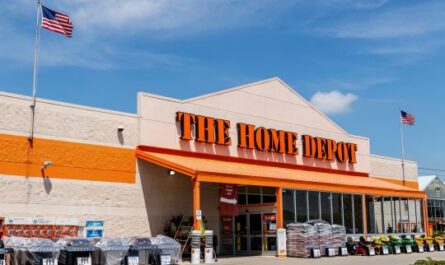Company remains steadfast in its approach to retail store development, investing some $19 million in capital expenditures for the segment during its latest quarter
MONROE, Mich. — Once again, La-Z-Boy’s latest quarterly earnings and related conference call speak to the importance of the retail side of the business, notably its investment in its store network.
An overview of the earnings report for the fiscal third quarter ended Jan. 25 can be seen here.
What stood out in the results was the strength of both its retail and wholesale segments. Its retail store sales grew by an impressive 11.2% during the quarter, compared with the wholesale segment, where sales increased 1.9%.
While much smaller, note that the wholesale growth is also coming off a larger number — $356.5 million — than the retail side of the business, where sales in the same period last year totaled $204.7 million, driven largely by same-store sales growth.
But the retail side of the business appears to be an area where the company continues to focus and understandably so.
For example, it invested about $19 million in capital expenditures during the quarter, much of which was through the acquisition and opening of new stores and remodels.

Company board Chair, President and CEO Melinda Whittington said on its recent conference call that the company ended the quarter with 362 stores and is on track to grow the La-Z-Boy Furniture Galleries network to 400 stores in the next several years, including 20 net additions in the past two years.
It also is expanding its number of company-owned stores to 197, up 13 in the past year, which now represents 54% of the total store network. This includes three new company-owned stores during the third quarter alone, she said, in markets such as Queen Creek, Arizona; Newington, New Hampshire; and Bellingham, Washington, while also closing one location.
She noted that the company also acquired two independently owned stores in Ohio during the third quarter and signed an agreement to acquire two more in Michigan in the fourth quarter.
“Growing our company-owned furniture gallery stores is a key driver to our success,” she said, noting that this helps the company control “the entire end-to-end consumer experience and develop more value-added consumer insights. These store acquisitions are immediately accretive to our profitability, allowing the company to benefit from the integrated wholesale and retail margins.”
Another important element of its store network is that it provides the company real-time data in terms of what’s actually selling. This helps guide product development efforts on the wholesale side of its business, which in turn helps the retail customers of those brands in their own buying decisions.
“We’re also growing the business through our refined channel strategy,” Whittington added. “The La-Z-Boy brand is showing up in more showrooms, as we are expanding strategic distribution while increasing our share of voice in the marketplace, to provide a broader range of consumers access to the La-Z-Boy brand. As our business scales, we continue to incorporate a more data-driven approach to product development. These deeper consumer insights enable us to design more on-trend merchandise.”
She told analysts on the call that this was recently illustrated with its expanded motion furniture offerings that included what she described as a new “consumer-relevant” assortment launched in High Point this past fall. Another key element in its upholstery mix, she added, is the ability to produce a wide variety of custom fabric and leather options with product being shipped in as little as four to six weeks, part of its domestic footprint that likely will prove to be another asset moving forward, particularly in light of tariffs.
“We’re driving gross margin expansion in our core business as we improve efficiencies in our supply chain,” Whittington noted. “We’re also expanding our assortment of on-trend merchandise in our main upholstery categories, particularly in motion.”
“This will continue to provide a key point of differentiation and allows us to address the growing desire for personalization in consumers’ homes,” she said, adding that the company also continues to be more socially relevant, “leaning into cultural trends where appropriate.”
For example, the company introduced a test-and-learn concept store in Lincoln Park in Chicago this past November. She noted that the smaller footprint was designed to appeal to a new generation of consumers, featuring a “recliner runway highlighting our most foundational product in a new and innovative way. … Included in our learning agenda, we’ll gain deep consumer insights that will inform next steps to use in our approach in our existing footprint, as well as inform experiments with entirely new concepts.”
Another bright spot for the business in the latest quarter was its Joybird e-commerce channel. Here, the company reported that written sales increased 10% and delivered sales rose 9% to $37 million, “driven by improved retail traffic and strong execution.”
“The digitally native brand is benefiting from strong execution in its retail footprint as it delivers a seamless omnichannel experience and enables consumers to bring their own personalized styles to life,” Whittington said, noting that she is also pleased with the division’s collaboration with Pantone on the Joybird Pantone collection, which features Joybird’s top-selling fabric while also offering a nod to the Pantone color of the year, Mocha Mousse.
She added that there also are opportunities to expand Joybird’s physical store footprint beyond the dozen or so locations in place currently, with as many as three to four new locations next year.
While the company plans to approach this with some caution, she said that it is ready to starting investing in Joybird’s growth “while still keeping a close eye on making progress on that bottom line.”
Thus, while challenges remain, including the threat of tariffs and a slower than anticipated rebound in housing, the company appears poised to continue expanding its brand footprint now and in the future.
“I’m excited about the momentum that is building across our enterprise,” Whittington said. “Our strong execution despite a still challenging industry backdrop is leading to both sales growth and margin expansion. We are thoughtfully and efficiently controlling what we can control. And we’ll continue to drive our Century Vision strategy with focus on expanding our La-Z-Boy brand reach disproportionately growing our company-owned retail segment, improving agility across our supply chain and driving efficiency and margin expansion.”




